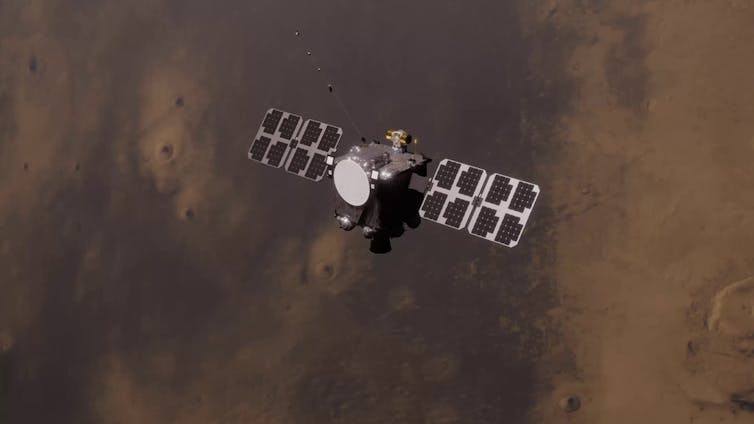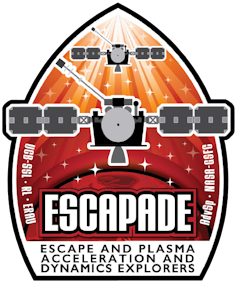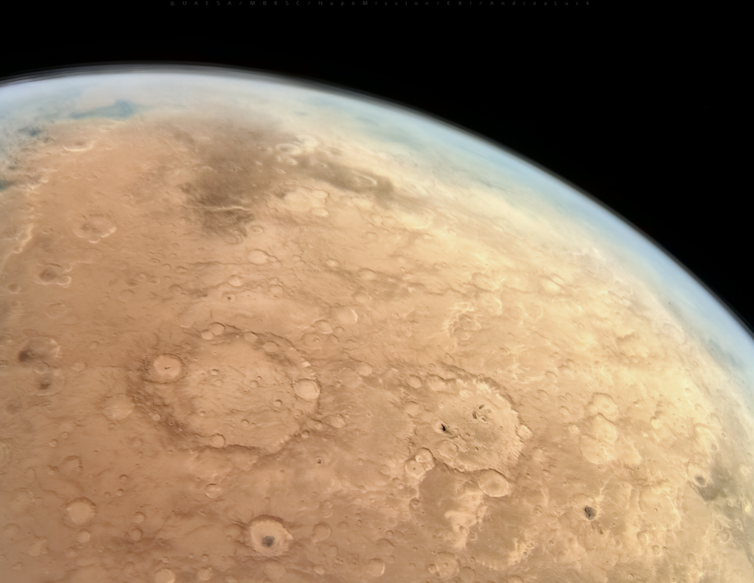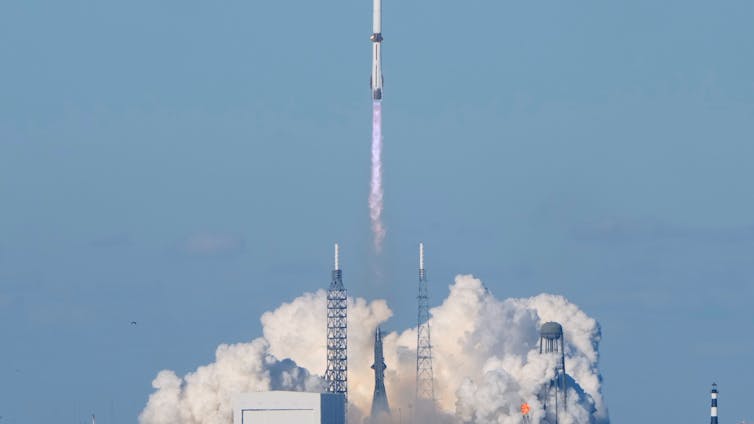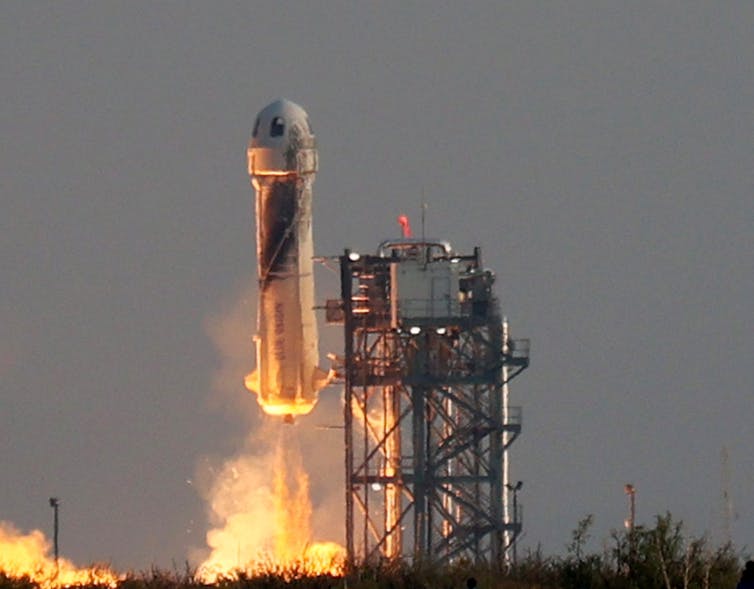Last Updated on May 21, 2024 by Daily News Staff
“Team Ohio” comprised of The Ohio State University, the State of Ohio, JobsOhio, and One Columbus Selected to Develop Facility to Support World’s First-Ever Science Park Devoted to Space
PARIS /PRNewswire/ — Voyager Space (Voyager), today announced it has selected a proposal from The Ohio State University, the State of Ohio, JobsOhio, and One Columbus (“Team Ohio”) to locate the terrestrial analog of the George Washington Carver Science Park (GWCSP) at Ohio State in Columbus, Ohio.
The GWCSP, established by Voyager and its operating company Nanoracks, is expected to be a core element of Starlab, the companies’ proposed commercial space station. In December 2021, Voyager and Nanoracks won a $160 million award from NASA to design Starlab as part of NASA’s Commercial Destination Free Flyers (CDFF) effort. The GWCSP is the world’s first-ever science park in space, operating today on the International Space Station (“ISS”). The GWCSP leverages a successful terrestrial business model where scientists and industry experts share findings, collaborate, and use new technologies to advance both scientific and commercial endeavors.
Together, Team Ohio and Voyager agreed to a two-phase program to realize the development of the GWCSP terrestrial lab. The project is still pending review and approval of incentives from JobsOhio and the Ohio Department of Development. The effort will begin this year with a facility at Ohio State’s College of Food, Agricultural, and Environmental Sciences. Next year, the organizations plan to break ground on a stand-alone facility on the Ohio State Aerospace and Air Transportation Campus, home to The Ohio State University Airport (KOSU), Ohio State’s Aerospace Research Center, Knowlton Executive Flight Terminal and Education Center, and a range of corporate, government, and private aviation and aerospace activities.
“Ohio is the birthplace of aviation and has a deep-rooted history in aerospace and defense innovation,” said Dylan Taylor, Chairman and CEO of Voyager Space. “It’s clear that Ohio offers the most beneficial location for a terrestrial facility to support the long-term success and utilization of George Washington Carver Science Park. Company researchers, operators, visionaries, and space change makers in Ohio will have the ability to influence and inspire organizations pursuing aerospace research and development and we are thrilled to be partnering with Team Ohio on this exciting project.”
Ohio’s colleges and universities collectively graduate more than 13,000 engineers and engineering technicians each year. The state is home to more than 110,000 public and private aerospace and aviation professionals, as well as the Air Force Research Laboratory (AFRL) at Wright-Patterson Air Force Base, Battelle, the NASA Glenn Research Center, the NASA Armstrong Test Facility and the Ohio Unmanned Aircraft Systems Center, which is pioneering innovative technologies to allow drones to fly safely beyond the visual line of sight.
“The George Washington Carver Science Park is a wonderful example of the powerful synergies that Ohio offers to commercial space ventures,” said Ohio Governor Mike DeWine. “This landmark partnership at the intersection of aerospace and agriculture is extraordinary. Together, we will accelerate transformational aerospace technologies as Ohio continues to lead this nation into the Aerospace Age of the 21st Century.”
The proposed site of the temporary GWCSP is located within the existing laboratory, classroom, office, and meeting space at the Agricultural Engineering Building on the Ohio State campus. In addition to research, teaching, and service operations, this facility is also home to the United States Department of Agriculture (USDA) Agricultural Research Service (“ARS”) (ars.usda.gov). NASA and USDA have more than 120 joint space agricultural research activities in progress currently.
“By collaborating with Team Ohio, Voyager Space is launching one of the most creative public-private partnerships in one of the most sought-after space destinations on this planet,” said Dr. John Horack, inaugural holder of the Neil Armstrong Chair in Aerospace Policy in the College of Engineering and John Glenn College of Public Affairs at The Ohio State University. “We know this initial collaborative investment will transform into a broader commercial space research magnet that serves as the primary North American site for the George Washington Carver Science Park.”
“In my conversations with the Voyager and Nanoracks team, I assured them that Ohio was 100 percent committed to being a leading innovator in aviation and aerospace,” said Lt. Governor Jon Husted, Director of InnovateOhio. “This partnership between Nanoracks, Voyager and Ohio State represents a significant step toward leading this nation into on-orbit, human commercial space operations, and the people of Ohio will be playing an important role in the future.”
“The decision to establish the George Washington Carver Science Park at The Ohio State University provides Voyager/Nanoracks direct access to some of the world’s leading research,” said J.P. Nauseef, JobsOhio president and CEO. “This commercial space laboratory will be the most advanced of its kind on Earth, bolstered in Ohio by 100,000 university researchers, faculty, staff and students, as well as partnerships between public, private and academic resources that will fuel the innovations that make sustained life in space possible.”
The research conducted at the GWCSP terrestrial lab will aim to generate positive social, economic, educational, and quality-of-life outcomes for a broad range of constituents, in particular, the Ohio agriculture community. Some of these benefits include research to preserve Ohio’s water quality, provide better crop production and improve plant and animal genetics for Ohio’s agricultural community.
“We have only just begun to scratch the surface of the possibilities and opportunities that await us in the ‘final frontier,’ and our ability to maximize future exploration hinges on collaboration between scientists and industry experts,” says President of The Ohio State University, Kristina M. Johnson. “Locating the terrestrial lab of the George Washington Carver Science Park on Ohio State’s campus will be the best possible way to facilitate this joint effort and ensure we are sharing resources, research and knowledge across multiple disciplines.”
The GWCSP terrestrial lab is set to include high-bay laboratory space, suitable for scientific research experiments that span the entire range of Starlab activities, procedure development, testing, prototyping, and other activities essential on the path to spaceflight research.
The George Washington Carver Science Park honors the legacy of the famed American agricultural scientist and inventor who developed hundreds of food products and practical, sustainable farming methods. The George Washington Carver Science Park is the first space-dedicated member of the International Association of Science Parks (IASP), a catalyst for global participation in the space research ecosystem. Additionally, Ohio-based Zin Technologies (ZIN) and the Universities Space Research Association (USRA), a Washington D.C.-based company with a long-standing presence in Ohio, are part of the founding GWCSP leadership team. ZIN is advising on the overall GWCSP in-space lab design and will develop key hardware as needed. USRA will direct and manage the science park, prioritize and schedule research, and oversee scientific lab operations.
About Voyager Space
Voyager Space is a space technology company dedicated to building a better future for humanity in space and on Earth. With nearly 20 years of spaceflight heritage and over 1500 successful missions as of August 2022, Voyager delivers space station infrastructure and services and technology solutions to commercial users, civil and national security government agencies, academic and research institutions, and more, with the goal to accelerate a sustainable space economy.
Cautionary Statement Concerning Forward-Looking Statements
This press release contains “forward-looking statements.” All statements, other than statements of historical fact, including those with respect to Voyager Space, Inc.’s (the “Company’s”) mission statement and growth strategy, are “forward-looking statements.” Although the Company’s management believes that such forward-looking statements are reasonable, it cannot guarantee that such expectations are, or will be, correct. These forward-looking statements involve many risks and uncertainties, which could cause the Company’s future results to differ materially from those anticipated. Potential risks and uncertainties include, among others, general economic conditions and conditions affecting the industries in which the Company operates; the uncertainty of regulatory requirements and approvals; and the ability to obtain necessary financing on acceptable terms or at all. Readers should not place any undue reliance on forward-looking statements since they involve these known and unknown uncertainties and other factors which are, in some cases, beyond the Company’s control and which could, and likely will, materially affect actual results, levels of activity, performance or achievements. Any forward-looking statement reflects the Company’s current views with respect to future events and is subject to these and other risks, uncertainties and assumptions relating to operations, results of operations, growth strategy and liquidity. The Company assumes no obligation to publicly update or revise these forward-looking statements for any reason, or to update the reasons actual results could differ materially from those anticipated in these forward-looking statements, even if new information becomes available in the future.
SOURCE Voyager Space
- NASA goes on an ESCAPADE – twin small, low-cost orbiters will examine Mars’ atmosphere
by The Conversation
NASA’s ESCAPADE mission launched two small, affordable orbiters to Mars on Blue Origin’s New Glenn rocket. Discover how these twin spacecraft will study Mars’ atmosphere, test new trajectories, and usher in a new era of rapid, low-cost space exploration.
- NASA Astronaut Jonny Kim to Share Insights from Eight-Month Space Station Mission
by Rod Washington
NASA astronaut Jonny Kim will discuss his eight-month International Space Station mission during a live news conference on Dec. 19. Discover the science, technology, and teamwork behind his groundbreaking journey, streaming live via NASA and covered by STM Daily News.
- Blue Origin’s New Glenn rocket landed its booster on a barge at sea – an achievement that will broaden the commercial spaceflight market
by Daily News Staff
Blue Origin’s New Glenn rocket successfully landed its booster at sea on only its second launch, marking a major milestone for commercial spaceflight. Learn how this achievement reduces launch costs and creates real competition for SpaceX.
- AI Spacecraft Propulsion: Machine Learning’s Role in Space Travel
by The Conversation
AI Spacecraft Propulsion: Discover how AI and machine learning are transforming spacecraft propulsion systems, from nuclear thermal engines to fusion technology, making interplanetary travel faster and more efficient.
- New Glenn Launches NASA’s ESCAPADE Mission and Sticks Historic Reusable Booster Landing
by Charles Elliot
Blue Origin’s New Glenn rocket successfully launched NASA’s ESCAPADE mission, deployed twin Mars-bound spacecraft, and achieved a historic reusable booster landing on its second attempt—marking major progress for future lunar, Martian, and national security missions.
Related
Discover more from Daily News
Subscribe to get the latest posts sent to your email.
